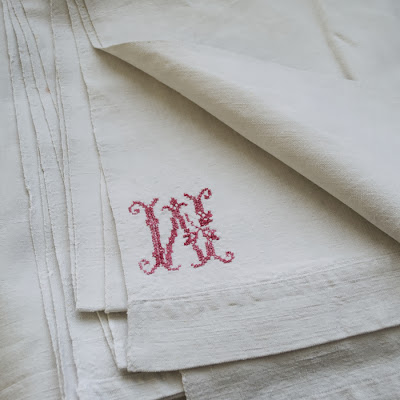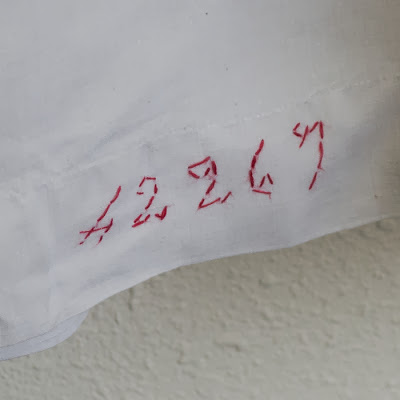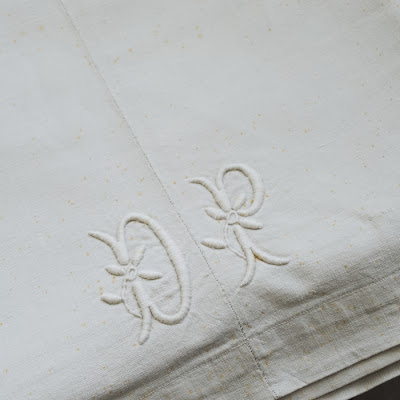Bed sheets were manufactured in many regions and in varying styles. The most common bed sheet was woven on narrow looms, so in order to make a sheet that was wide enough to cover a two-person bed, these sheets have a hand-stitched center seam that joined two fabric widths.
Many families took their bedding to the local blanchisserie to be laundered. In order to avoid mix-ups or loss, each person embroidered an identifying mark or initials on the sheets. Many people simply embroidered tiny red letters or numbers on the hem, but others took the time to embroider monograms.
This 19th century sheet has a red cross-stitch letter "M" for identification. The laundry marks were always in red thread.
This sheet close-up pictured below shows the center seam, which was always sewn edge-to-edge. This sheet was embroidered for decoration, rather than for simple identification, so it is done in white.




